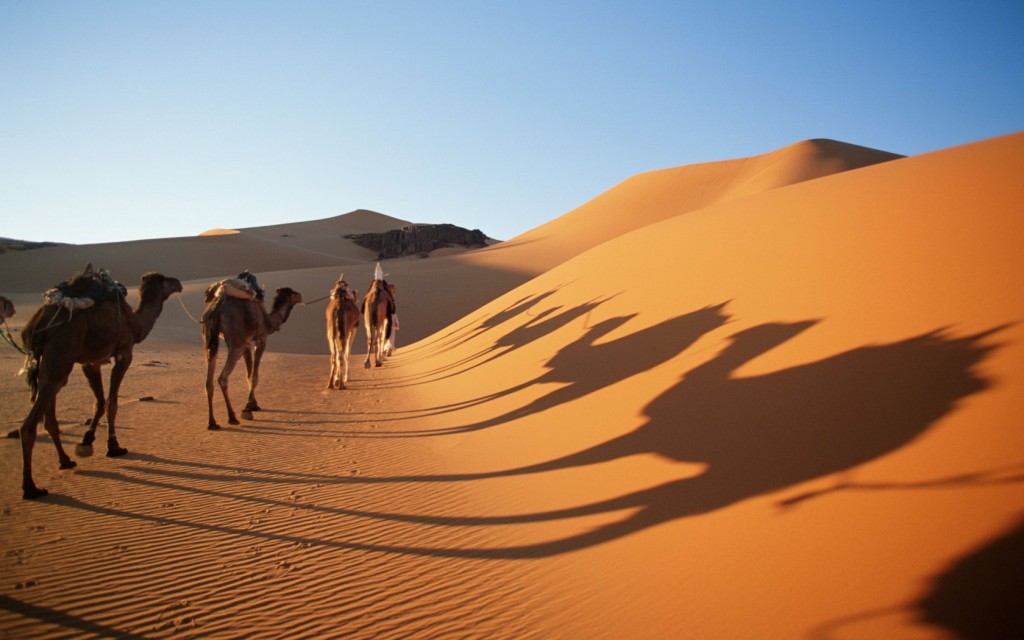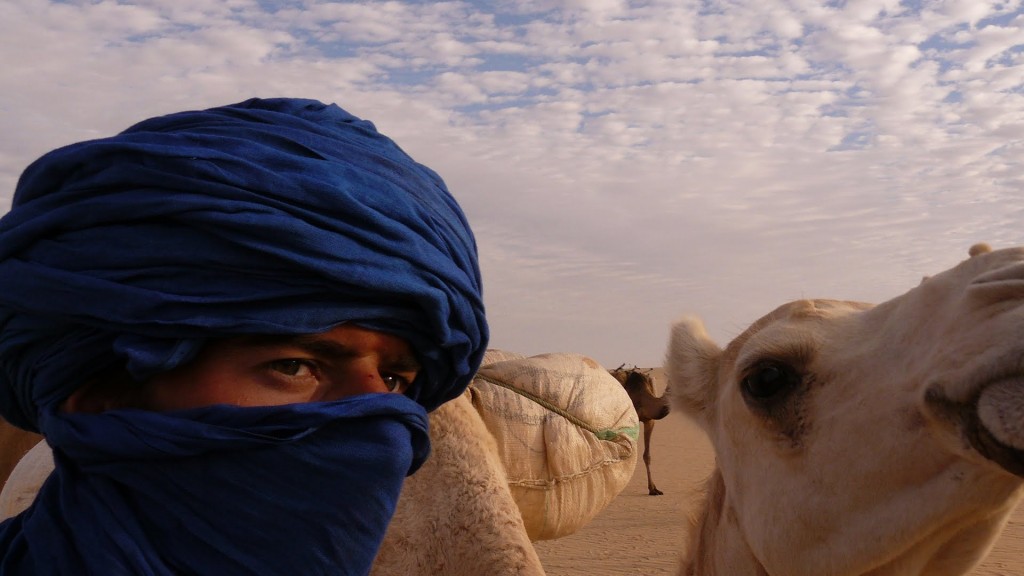These two albums form a fine introduction to a world of music which is now familiar to Europeans, but still hidden from most listeners in North America. The Sahara Desert has often been compared to a sea ― blending influences and stimulating the disparate cultures along its shores. The sailors are the tribes of the desert: the Tuareg, the enigmatic Teda, and the various “arab” tribes, such as the Ikoku Nemadi, Bithan, and Shewa (these last all speak varieties of Arabic incomprehensible to standard Arabic speakers, and even to the speakers of colloquial Maghribi Arabic in Morocco or Algeria. Culturally and biologically, they are of the Sahara, like the Tuareg, not merely transplanted badawī [ بدوي ] from Arabia.).
If you have read Frank Herbert’s Dune, you can get some notion of the Tuareg. The Fremen tribes in that novel were patterned on them. They speak languages in the Berber family, dimly related to Ancient Egyptian. “Berbers” refers to the sedentary people who inhabit ancient towns and cities of North Africa (St. Augustine was the most famous Berber), but the desert Tuareg are related to them linguistically. Nothing can really convey the stark severity, and the poetry of life among the “people of the blue veil”, but you can get a hint of it from the band Tinariwen, who abandoned desert warfare with the ceasefire at Timbuktu to start a recording career in the late 1990’s. Other Tuareg groups, Chet Féwer, Kel Tin Lokienne, and the Tartit Ensemble, are also present on the album. They represent tribes far distant from each other. Some of the “Arab” tribes are present, as well. The towns on the shore of the sand are represented by a variety of groups and singers (Malouma, Compagnie Jellouli, Sahraoui Bachir), and there is one singer in the Songhai language from Timbuktu, Seckou Maïga. The remote Teda of the Tibesti are not represented ― a sad lack, because their evocative “call and answer” odes, between female singers and male players of the stringed keleli are hauntingly beautiful. But the Teda have not been drawn into the global community in the way that the Tuareg have suddenly been, and still remain inaccessible.
All this stuff is much more exotic than the Raï music and the Egyptian pop music on the Putamayo World Music collection North African Groove. Discos all over Europe have become filled with Raï’s wonderful back-beat-heavy combination of traditional North African musics with American funk, salsa, French cabaret, and everything else imaginable. Superstars such as Cheb Mami (singing the delightful “Viens Habibi”) and Khaled are represented on this album, and it is a good introduction to the North African pop scene.
If you listen to these two albums one after the other, you will get a sense of the intricacy and historic depth of this musical landscape. It would be like playing an archaic mountain dulcimer ballad from West Virginia, “Saint James Infirmary”, “City of New Orleans”, Chuck Berry’s “Roll Over Beethoven”, and a Hendrix solo, one after another.

0 Comments.